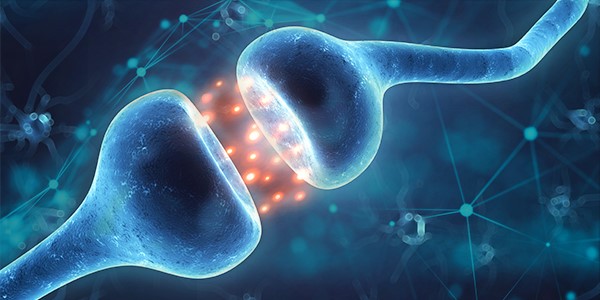If you haven’t heard of PEA previously, please take note of this blog. PEA is automatically produced by your body when key areas (cells and tissues) are damaged (an injury) or threatened to become damaged by stress. The production of PEA is highest in response to pain and inflammation. PEA is best known for supporting your body in key areas such as pain, neuroprotection (protect nerve cells against damage, degeneration, or impairment of function), and helping regulate immune function.
What is PEA?
Simply put, PEA is a beneficial fat produced by our cells in response to pain, inflammation, and stress. It is also found in several plant and animal food sources, such as olive oil, safflower, soybeans, peanuts, and chicken egg yolks.
Why do We Need to Take PEA if It Is Produced Naturally in the Body?
In a perfect world, your body should be able to keep up with the demand and produce enough PEA to keep you comfortable and feeling great. Unfortunately, the reality is we don’t live in a perfect world. Not long after the body produces PEA, it is quickly removed. Therefore, if you have an issue with chronic pain, inflammation, or stress, your body needs to keep making more PEA to keep you comfortable. Regretfully, the body doesn’t seem to keep up with the demand for more PEA, which leads to persistent pain and discomfort. This inability to keep up with demand will lead to a spiral effect of worsening your condition and health over time. Since the body can’t keep up with the demand, it is necessary to take a supplement form of PEA.
Why can’t I eat more foods that contain PEA?
As with many compounds found in our food sources, the body often requires large amounts of these foods to be consumed to have a therapeutic effect. This is where taking PEA as part of your daily supplement regimen becomes essential for those concerned with pain, inflammation, stress, protecting the nervous system, and supporting your immune health.
What does PEA do?
PEA has several ways in which it supports your body. Studies show that PEA helps as an analgesic (help relieve pain) by its effects at the site of injury. Meaning it works in the spot where you were injured. If you have a cut, it works on that area to help reduce the inflammation that causes you to feel pain. Research shows PEA can also be used topically to achieve these benefits.
PEA helps slow or inhibit the release of inflammatory chemicals produced in the body and the central nervous system (brain, for example). By helping slow the release of these chemicals, there can be a positive impact throughout the body.
Regarding immune health, some of the inflammatory chemicals mentioned above are also linked to why PEA helps support a healthy immune system and response. In addition, PEA has also been studied for its effects on viral infections (colds and influenza) and has shown to be very beneficial, especially in reducing episodes of fever, headache, and sore throat.[i] Additionally, PEA affects the cells that release histamine (mast), which means PEA will provide an anti-allergy effect.
Research with PEA has also shown it helps decrease lactic acid production in those who exercise. Lactic acid buildup leads to muscle fatigue, stiffness, and damage. So, by reducing lactic acid production, you would expect to have reduced muscle damage from exercise and increased exercise performance.
PEA also benefits those with sleep problems by decreasing the time it takes to fall asleep, improving sleep quality, and improving the time it takes to feel awake and think when you wake up in the morning. The effects are achieved by supporting one of the systems involved with sleep and reducing pain (pain is a contributing factor to poor sleep).
Taking supplemental PEA has also been shown to slow the breakdown of the PEA naturally produced by the body. Slowing its breakdown allows PEA to be more prevalent and effective over extended periods. A Win-Win situation!
Has PEA been clinically studied?
YES. A quick search of PubMed.gov will bring up 959 results.
Is it Safe?
Yes. PEA is considered safe in literally every aspect. There are no long- or short-term side effects, no allergic reactions, and no known adverse reactions with medications, supplements, conditions, or lab tests. This means that you can take it alongside your regular therapy without problems.
How much should you take?
The answer here is it depends! Clinical studies have shown that the ingredient Levagen+ (PEA with enhanced ability to get into your bloodstream) has doses between 175mg and 600mg per day, depending on the condition. Examples of dosing using Levagen+:
- Joint Health: 300-600mg per day
- Exercise Recovery: 167.5mg daily
- Joint Pain: 350mg daily
- Headaches: 525mg daily
- Sleep: 350mg 1 hour before sleep onset
What is Levagen+
Levagen+ is not your typical PEA ingredient because it uses patented technology (LipiSperse®) to make PEA better get into your circulation. While PEA is excellent at what it does (reduce pain and inflammation), it is not easily absorbed into the body or available for use in the body. Using LipiSperse® technology, the amount of PEA getting into your circulation improves by almost two times (the actual was 1.75 times more available). The more PEA that can get into circulation, the more potential for helping you achieve the results you need from taking PEA. Therefore, Levagen+ is a preferred form of PEA.
Summary
We can see that PEA is an excellent and safe ingredient to consider for most people. However, rarely do people not have issues with pain and inflammation. Inflammation can occur in the body without you even knowing it. Since PEA is naturally produced in the body but not in the amounts we may need daily, taking a supplemental form of PEA is required. It has been well-studied, safe, and proven effective. It should be all you need to convince yourself that it should become part of your daily supplement program.
[i] Keppel Hesselink JM, de Boer T, Witkamp RF. Palmitoylethanolamide: A Natural Body-Own Anti-Inflammatory Agent, Effective and Safe against Influenza and Common Cold. Int J Inflam. 2013;2013:151028. doi:10.1155/2013/151028

